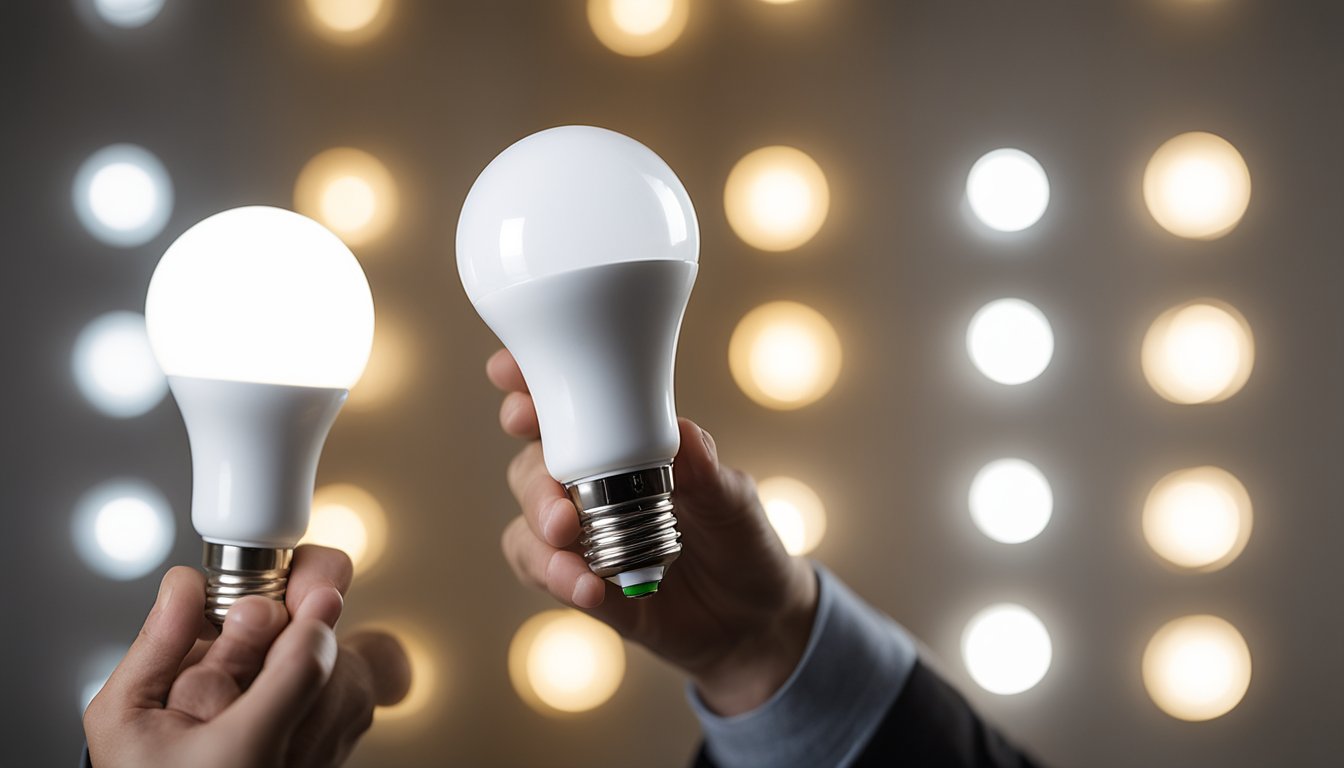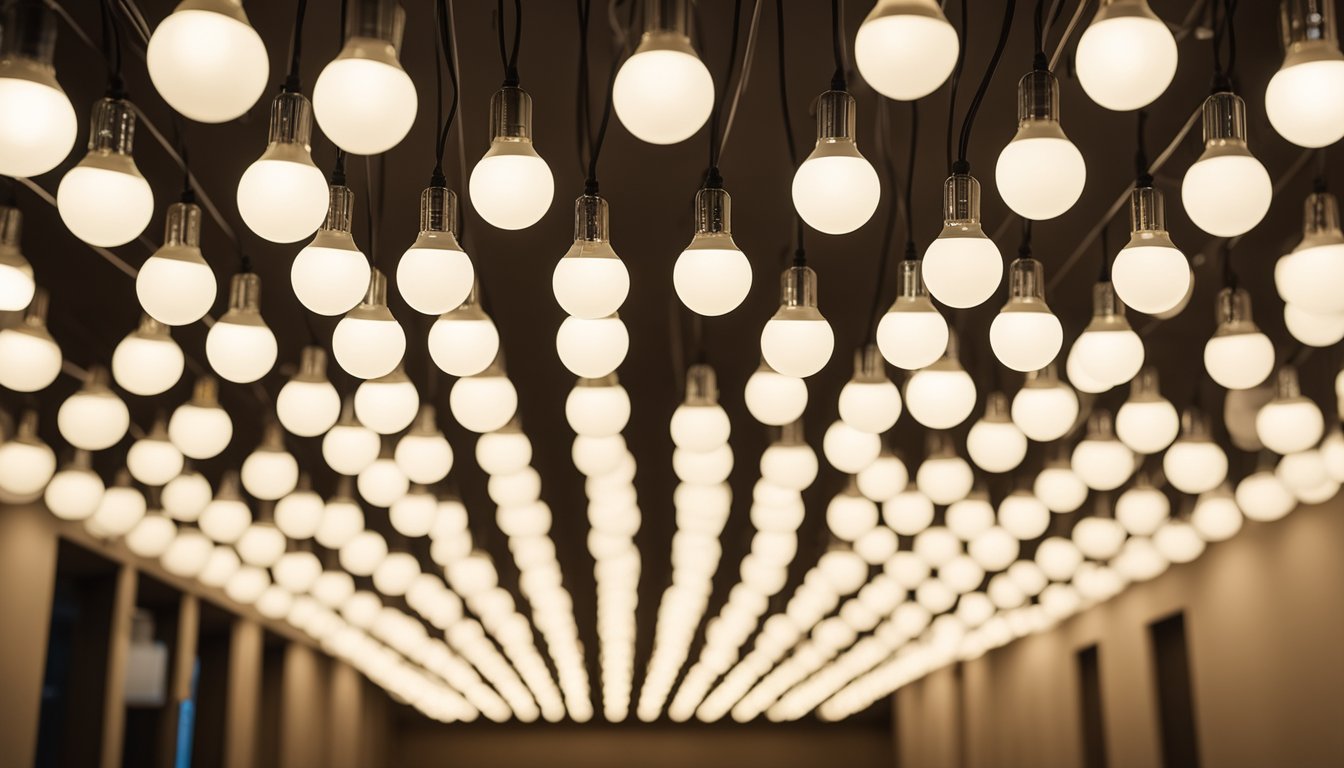Late updated: 27 Jun 2024 19:06
Written by: Eleanor Hartman
Choosing The Right LED Bulbs For Your UK Home: A Comprehensive Guide
Choosing the right LED bulbs for your UK home can seem like a daunting task with so many options available. From energy efficiency to brightness levels, there are several factors to consider when selecting the right lighting. The most important factor to consider is the energy efficiency of LED bulbs, which can significantly reduce your electricity bills over time.

LED lighting technology has revolutionised how we illuminate our homes, providing not only cost savings but also a longer lifespan compared to traditional incandescent bulbs. Whether it’s for your cosy living room, bright kitchen, or tranquil bedroom, finding the right type of LED bulb is essential to achieve the desired ambiance and functionality.
We will guide you through the essential aspects of LED bulbs, including wattage, dimmability, and beam angles, helping you make informed decisions for every room in your home. Stay with us as we explore the best options tailored to your needs.
Key Takeaways
- Energy efficiency is the primary advantage of LED bulbs.
- Matching LED bulb specs to your room's requirements is crucial.
- Understanding LED technology helps make better choices.
Understanding LED Lighting Technology
Choosing the right LED light bulbs involves understanding their key characteristics and advantages, such as energy efficiency and brightness, which significantly differ from traditional incandescent bulbs. We'll cover the transition to LEDs, as well as important metrics like lumens and colour temperature.
The Transition from Incandescent to LED
Incandescent bulbs have long been the staple of household lighting. However, they are highly inefficient, converting most of their energy into heat rather than light. Because of this, the switch to LED (Light-Emitting Diodes) came as a necessary evolution in lighting technology.
LEDs use significantly less energy to produce the same amount of light. This translates into lower electricity bills and a reduced carbon footprint. Additionally, LED bulbs have a much longer lifespan. They can last up to 25,000 hours compared to the typical 1,000-hour lifespan of incandescent bulbs.
Key Point: LEDs are an environmentally friendly option that saves both energy and money over time.
LED Basics: Lumens, Wattage, and Brightness
When selecting LED light bulbs, it's essential to understand the concepts of lumens, wattage, and brightness. Unlike incandescent bulbs, where wattage determined brightness, LEDs use lumens to measure brightness.
- Lumens: This is the unit of measure for light output. The higher the lumens, the brighter the bulb.
- Wattage: For LEDs, wattage indicates power consumption, not brightness. Lower wattage means less energy used.
- Brightness: This is directly related to lumens and not wattage for LEDs. For instance, a 10-watt LED can produce the same lumens as a 60-watt incandescent bulb.
By understanding the relationship between lumens and wattage, we can select suitable LED bulbs that provide the desired brightness while being energy-efficient.
Colour Temperature and Ambient Lighting
The colour temperature of an LED bulb affects the mood and ambiance of a room. Measured in Kelvin (K), colour temperature ranges from warm to cool tones.
- Warm White (2,700-3,000K): These bulbs emit a cosy, yellowish light, ideal for living rooms and bedrooms.
- Cool White (3,500-4,100K): This range offers a neutral white light suitable for kitchens and workspaces.
- Daylight (5,000-6,500K): These bulbs provide a bright, blue-white light, perfect for areas requiring high visibility, like garages or bathrooms.
Background lighting can significantly influence a room's atmosphere, making the choice of colour temperature crucial in creating the desired effect.
Final Note: Understanding these key aspects helps ensure that the LED bulbs we choose are efficient, cost-saving, and perfect for our lighting needs.
Selecting the Right LED Bulbs for Every Room

Choosing the right LED bulbs for each room in your home ensures both comfort and efficiency. We'll explore the best lighting solutions for different areas, considering factors such as wattage, colour temperature, and special features.
Kitchen and Living Room Lighting Solutions
In the kitchen, functional lighting is paramount. Bright white or cool white LED bulbs (4100 Kelvins) provide an energetic feel and are ideal for food preparation areas. GU10 LED spotlights work well for task lighting under cabinets. Additionally, using dimmable LED options allows us to adjust the light for different cooking and dining activities.
For living rooms, balance is key. We recommend using warm white LEDs (2700-3000 Kelvins) to create a cosy atmosphere. E27 or B22 bulbs are common for ceiling fixtures. To achieve flexibility, consider smart lighting systems that can be controlled via Bluetooth or a smartphone app, allowing us to modify settings based on activities or mood.
Enhancing Bedroom and Outdoor Illumination
Bedrooms benefit from soft, relaxing lighting. Warm white LEDs are suitable, and dimmable options are especially useful for creating a serene environment before bedtime. Use E27 LED bulbs in bedside lamps, and consider smart features for convenience. The Colour Rendering Index (CRI) should also be high to accurately reflect colours, enhancing the room's decor.
For outdoor spaces, durability and brightness are crucial. Select LEDs with a higher wattage for security lighting. Natural white LEDs (4000-5000 Kelvins) are ideal for garden areas to maintain a natural appearance. Ensure that the bulbs are rated for outdoor use to withstand weather conditions. Popular choices include B22 and GU10, and using energy-efficient options helps keep electricity costs down while being eco-friendly.
Specialised LED Options: Dimmers and Smart Features
Dimmable LED bulbs enhance the versatility of home lighting. By installing compatible dimmer switches, we can control light intensity, adding comfort and ambiance. We must ensure that the LED bulbs and switches are designed to work together to avoid flickering.
Smart lighting systems offer advanced control over home illumination. These LEDs often come with features like scheduled lighting, voice control, and energy monitoring. By integrating smart LEDs with devices such as Amazon Alexa or Google Home, we streamline the management of our lighting setup, making it adaptable and energy-efficient.
Frequently Asked Questions

In this section, we address some common concerns regarding the selection and benefits of LED bulbs for your UK home.
How do I select the appropriate wattage for LED bulbs in different rooms?
When choosing wattage, consider the specific activities in each room. For general bedroom lighting, a 6-9 watt LED bulb is usually sufficient. Kitchens and bathrooms, where brighter light is needed, may require 9-12 watt LED bulbs. Living rooms can vary, but a mix of 6-12 watts often works best.
What factors should I consider when choosing LED bulbs for my home interior?
First, think about the bulb's colour temperature. Warm white (2700K-3000K) is ideal for relaxing spaces like bedrooms. For kitchens and workspaces, cool white (3500K-4100K) or daylight (5000K-6500K) can be more suitable. Also, ensure the bulb has good compatibility with your fixtures and dimmer switches if needed.
Which LED bulb provides the highest luminescence for home environments?
LED bulbs are measured in lumens, which indicate brightness. For maximum luminescence, look for bulbs that offer 1500-2000 lumens. These are ideal for areas requiring intense lighting, such as study rooms or kitchens. Remember to check the beam angle to ensure proper light spread.
What are the advantages of using LED bulbs over traditional bulbs in a UK home?
LED bulbs are hugely energy-efficient, using up to 90% less energy compared to incandescent bulbs. This means lower electricity bills and reduced environmental impact. Additionally, LEDs have a significantly longer lifespan, often exceeding 25,000 hours, reducing the frequency and cost of replacements.
How can I understand the correlation between LED bulb wattage and brightness?
Unlike traditional bulbs, LED brightness is not solely dependent on wattage. A lower wattage LED can produce the same brightness as a higher wattage incandescent bulb. Lumens, not watts, are the true measure of brightness. For example, a 10-watt LED can emit around 800-900 lumens, comparable to a 60-watt incandescent bulb.
What should I look for in LED light colours to enhance my home’s ambience?
Light colour, or colour temperature, significantly affects the ambience. Warm white (2700K-3000K) creates a cosy, inviting atmosphere, perfect for living rooms and bedrooms. Cool white (3500K-4100K) is more suited for task-oriented spaces like kitchens and home offices. For a natural daylight effect, choose bulbs with 5000K-6500K.